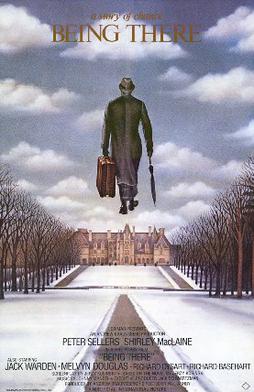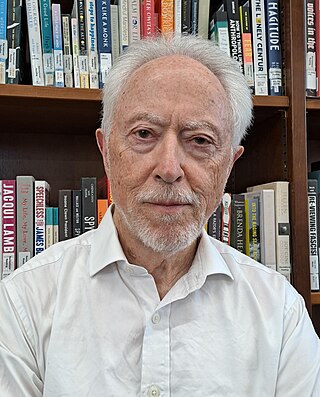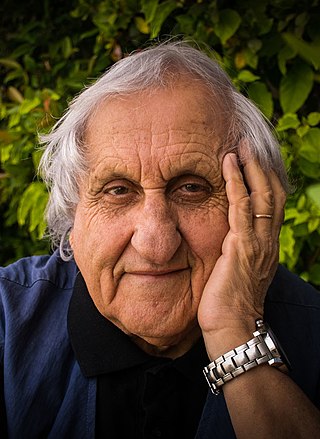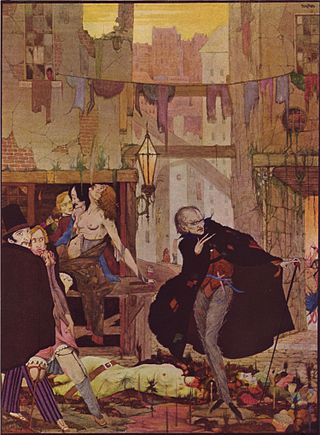
A Christmas Carol. In Prose. Being a Ghost Story of Christmas, commonly known as A Christmas Carol, is a novella by Charles Dickens, first published in London by Chapman & Hall in 1843 and illustrated by John Leech. A Christmas Carol recounts the story of Ebenezer Scrooge, an elderly miser who is visited by the ghost of his former business partner Jacob Marley and the spirits of Christmas Past, Present and Yet to Come. After their visits, Scrooge is transformed into a kinder, gentler man.

The Boston Massacre was a confrontation in Boston on March 5, 1770, in which nine British soldiers shot several of a crowd of three or four hundred who were harassing them verbally and throwing various projectiles. The event was heavily publicized as "a massacre" by leading Patriots such as Paul Revere and Samuel Adams. British troops had been stationed in the Province of Massachusetts Bay since 1768 in order to support crown-appointed officials and to enforce unpopular Parliamentary legislation.

Being There is a 1979 American satirical comedy-drama film directed by Hal Ashby, based on the 1970 novel of the same name by Jerzy Kosiński. It was adapted for the screen by Kosiński and the uncredited Robert C. Jones. The film stars Peter Sellers, Shirley MacLaine, and Melvyn Douglas and features Jack Warden, Richard Dysart, and Richard Basehart.

Walter Bagehot was an English journalist, businessman, and essayist, who wrote extensively about government, economics, literature and race. He is known for co-founding the National Review in 1855, and for his works The English Constitution and Lombard Street: A Description of the Money Market (1873).

An intellectual is a person who engages in critical thinking, research, and reflection about the reality of society, and who proposes solutions for the normative problems of society. Coming from the world of culture, either as a creator or as a mediator, the intellectual participates in politics, either to defend a concrete proposition or to denounce an injustice, usually by either rejecting, producing or extending an ideology, and by defending a system of values.

John Richard Schlesinger was an English film and stage director, and actor. He emerged in the early 1960’s as a leading light of the British New Wave, before embarking on a successful career in Hollywood, often directing films dealing frankly in provocative subject matter, combined with his status as one of the only openly-gay directors working in mainstream films.

John Maxwell Coetzee FRSL OMG is a South African and Australian novelist, essayist, linguist, translator and recipient of the 2003 Nobel Prize in Literature. He is one of the most critically acclaimed and decorated authors in the English language. He has won the Booker Prize (twice), the CNA Literary Award (thrice), the Jerusalem Prize, the Prix Femina étranger, and The Irish Times International Fiction Prize, and holds a number of other awards and honorary doctorates.

The Raft of the Medusa – originally titled Scène de Naufrage – is an oil painting of 1818–19 by the French Romantic painter and lithographer Théodore Géricault (1791–1824). Completed when the artist was 27, the work has become an icon of French Romanticism. At 491 by 716 cm, it is an over-life-size painting that depicts a moment from the aftermath of the wreck of the French naval frigate Méduse, which ran aground off the coast of today's Mauritania on 2 July 1816. On 5 July 1816, at least 147 people were set adrift on a hurriedly constructed raft; all but 15 died in the 13 days before their rescue, and those who survived endured starvation and dehydration and practiced cannibalism. The event became an international scandal, in part because its cause was widely attributed to the incompetence of the French captain.

Avraham Gabriel Yehoshua was an Israeli novelist, essayist, and playwright. The New York Times called him the "Israeli Faulkner". Underlying themes in Yehoshua's work are Jewish identity, the tense relations with non-Jews, the conflict between the older and younger generations, and the clash between religion and politics.

Flâneur is a French noun referring to a person, literally meaning "stroller", "lounger", "saunterer", or "loafer", but with some nuanced additional meanings. Flânerie is the act of strolling, with all of its accompanying associations. A near-synonym of the noun is boulevardier. Traditionally depicted as male, a flâneur is an ambivalent figure of urban affluence and modernity, representing the ability to wander detached from society with no other purpose than to be an acute observer of industrialized, contemporary life.

Palgrave Macmillan is a British academic and trade publishing company headquartered in the London Borough of Camden. Its programme includes textbooks, journals, monographs, professional and reference works in print and online. It maintains offices in London, New York, Shanghai, Melbourne, Sydney, Hong Kong, Delhi, and Johannesburg.
Literary realism is a literary genre, part of the broader realism in arts, that attempts to represent subject-matter truthfully, avoiding speculative fiction and supernatural elements. It originated with the realist art movement that began with mid-nineteenth-century French literature (Stendhal) and Russian literature. Literary realism attempts to represent familiar things as they are. Realist authors chose to depict every day and banal activities and experiences.

"The Man of the Crowd" is a short story by American writer Edgar Allan Poe about a nameless narrator following a man through a crowded London. It was first published in 1840.

Violence in art refers to depictions of violence in high culture art as well as popular culture such as cinema and theater. It has been the subject of considerable controversy and debate for centuries. In Western art, graphic depictions of the Passion of Christ have long been portrayed, as have a wide range of depictions of warfare by later painters and graphic artists. Theater and, in modern times, cinema have often featured battles and violent crimes. Similarly, images and descriptions of violence have historically been significant features in literature. Margaret Bruder, a film studies professor at Indiana University, states that the aestheticization of violence in film is the depiction of violence in a "stylistically excessive", "significant and sustained way". Aestheticized violence differs from gratuitous violence in that it is used as a stylistic element, and through the "play of images and signs" references artworks, genre conventions, cultural symbols, or concepts.

Edward Wadie Said was a Palestinian American academic, literary critic and political activist. A professor of literature at Columbia University, he was among the founders of postcolonial studies. Born in Mandatory Palestine, he was a citizen of the United States by way of his father, a U.S. Army veteran.

Realism in the arts is generally the attempt to represent subject matter truthfully, without artificiality and avoiding speculative and supernatural elements. The term is often used interchangeably with naturalism, although these terms are not synonymous. Naturalism, as an idea relating to visual representation in Western art, seeks to depict objects with the least possible amount of distortion and is tied to the development of linear perspective and illusionism in Renaissance Europe. Realism, while predicated upon naturalistic representation and a departure from the idealization of earlier academic art, often refers to a specific art historical movement that originated in France in the aftermath of the French Revolution of 1848. With artists like Gustave Courbet capitalizing on the mundane, ugly or sordid, realism was motivated by the renewed interest in the common man and the rise of leftist politics. The realist painters rejected Romanticism, which had come to dominate French literature and art, with roots in the late 18th century.

Die Anarchisten: Kulturgemälde aus dem Ende des XIX Jahrhunderts is a book by anarchist writer John Henry Mackay published in German and English in 1891. It is the best known and most widely read of Mackay's works, and made him famous overnight. Mackay made it clear in the book's subtitle that it was not intended as a novel, and complained when it was criticised as such, declaring it instead propaganda. A Yiddish translation by Abraham Frumkin was published in London in 1908 by the Worker's Friend Group, with an introduction by the journal's editor, prominent London anarchist Rudolf Rocker. It was also translated into Czech, Dutch, French, Italian, Russian, Spanish, and Swedish. Die Anarchisten had sold 6,500 copies in Germany by 1903, 8,000 by 1911, and over 15,000 by the time of the author's death in 1933.
Sandra María Esteves is a Latina poet and graphic artist. She was born and raised in the Bronx, New York, and is one of the founders of the Nuyorican poetry movement. She has published collections of poetry and has conducted literary programs at New York City Board of Education, the Caribbean Cultural Center, and El Museo del Barrio. Esteves has served as the executive director of the African Caribbean Poetry Theater. She is the author of Bluestown Mockinbird Mambo and Yerba Buena. She lives in the Bronx.
This is a bibliography of books by or about the director and actor Orson Welles.
Satire is a television and film genre in the fictional or pseudo-fictional category that employs satirical techniques.
















